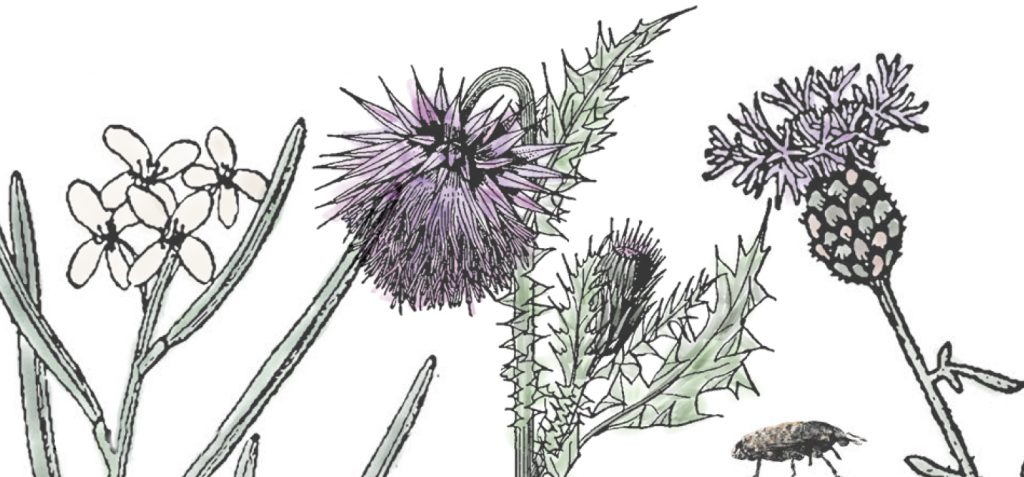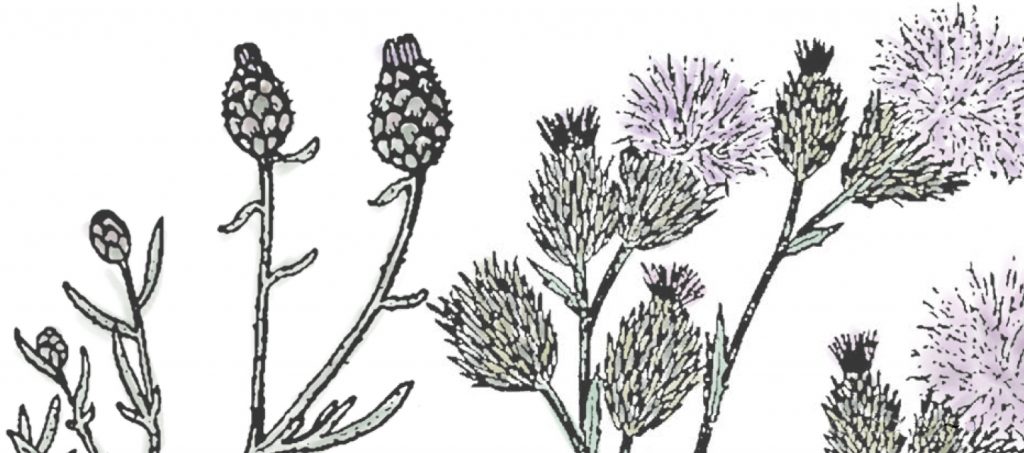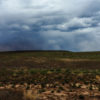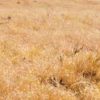Plants as stories of human meddling
The Wyoming census for the plant kingdom is out! Over 2,900 different kinds of vascular plants grow in the wild in Wyoming according to experts at UW’s Rocky Mountain Herbarium. They include more than 2,500 native species along with 372 nonnative ones as of 2018. Every single wild plant falls into one of those two categories: native or nonnative. Native plants belong, not just by living their whole lives here but by having Wyoming-ness inscribed in their genes over the ages. They are each uniquely adapted to their environment and to each other.

What about the nonnatives? They don’t have the fine-tuned adaptations or provide the ecological support of the natives. Some, but not all, nonnative plants are invasive, like biological bombs that multiply exponentially across the landscape, wreaking havoc on native plants and animals. People often think of natives as “good” and nonnatives as “bad.” But our views and actions haven’t always been consistent with these labels. In fact, the Wyoming plant census, with all its nonnatives, is full of stories about how changing human perceptions of good and bad have shaped the flora of our state.
Bring it to the classroom: Access a version of this article modified to an eighth-grade reading level.
Waves of nonnative plants started showing up on Wyoming landscapes well over 100 years ago and have continued right up to the present. A census never stays the same. One of the earliest weeds to arrive in Wyoming was Canada thistle (Cirsium arvense), appearing in Cheyenne in 1901. One of the more recent noxious weeds to arrive was garlic mustard (Alliaria petiolata), first appearing in Wyoming in 2014 along a trail in Devils Tower National Monument. Garlic mustard is highly invasive in most of the country, and the National Park Service is trying to eradicate it from the monument. Those 100-plus years of nonnative species arrivals include tales of human intentions and accidents, international storylines, and a few contradictions.
Some nonnative plants once considered desirable are now considered invasive. For example, spotted knapweed (Centaurea maculosa; syn. C. biebersteinii, C. stoebe) came from central Europe, first arriving in North America by way of British Columbia. Bee keepers planted it in western Montana for the flavorful honey its nectar produced. But in the absence of any natural control, spotted knapweed spreads widely and is recognized as a noxious weed in 15 other states as well as Wyoming.
Similarly, settlers brought Russian olive (Elaeagnus angustifolia), a hardy tree found in southern Europe and central and western Asia, to the New World for windbreaks in the arid West. It is very fragrant—Thermopolis takes on aromatic exquisiteness in calm midsummer evenings when Russian olive is in flower along the Bighorn River. Some birds and small mammals like the seeds and carry them far and wide. Now Russian olive has taken over scarce river woodlands at low elevations, making them less hospitable for wildlife and livestock. Wyoming added Russian olive to the state noxious weed list in 2007, making it illegal to sell commercially. A relative called silverberry (Elaeagnus commutata) is a native shrub that bears much the same sublime fragrance and is starting to appear in nursery trade featuring native plants.
Other plants were accidental introductions. Canada thistle (Cirsium arvense) was likely one of the first weeds early settlers brought to North America, coming as a contaminant of grain crops from the eastern Mediterranean region of Europe. The name Canada thistle comes from early residents of New England who blamed its appearance on the French traders from Canada. It’s time to pardon Canada! Historians now believe it arrived in both countries at about the same time. Today, it grows in moisture-collecting places in every county of Wyoming, a denizen of ditches and dams as well as valleys and wetlands. It spreads by underground root-like stems, often forming large, dense colonies.

Sometimes our attacks on invasive plants bring natives down with them. To keep the invasive musk thistle (Carduus nutans) in check, weed managers imported one of its natural pests, the Eurasian flowerhead weevil (Rhinocyllus conicus), from the Old World. The weevil’s larvae feed on developing seeds in the thistle flowerhead. This biocontrol strategy succeeded in turning around severe musk thistle invasions. However, recent studies suggest the weevil has also taken a liking to the rare native Ownbey’s thistle (Cirsium ownbeyi). Like invasive plants, the Eurasian flowerhead weevil didn’t behave in a predictable way when taken away from its overseas home.
Fortunately, not all nonnative plants are invasive. Crested wheatgrass (Agropyron cristatum) is a bunchgrass from Russia widely planted in the western United States to control erosion on reclaimed mines and roadside cutbanks. It is locally abundant in every county of Wyoming, and though persistent where planted, it does not readily spread into surroundings. Likewise, common lilac (Syringa vulgaris), a sweet shrub favored in gardens, persists around houses including abandoned homesteads, but is not a wild plant or a species that spreads and invades.
Native plants are never truly invasive in the wilds of Wyoming, but they can be darned pesky for some human tastes and land uses. In the realm of pesky native species, there is exactly one native plant on the Wyoming noxious weed list, skeletonleaf bursage (Ambrosia tomentosa). It garnered this dubious distinction by producing spiny bur-like seeds and proliferating in some cropland settings. It spreads by seed and creeping roots and can grow over waist high on fertile ground. It is widespread on the High Plains, growing in both cultivated cropland and rangeland. As a designated noxious weed, skeletonleaf bursage is the target of state-funded herbicide spraying in cropland, but it maintains a firm roothold in the state.
The word “weed” has been used indiscriminately to refer to both native and nonnative plants. For example, every kind of milkweed growing wild in Wyoming is actually native. These plants may have gotten the weed moniker by thriving where manmade habitat fostered their spread, for example in planted hay meadows, or because they are poisonous to eat. Showy milkweed (Asclepias speciosa) grows in moist, eastern Wyoming valleys and wetlands as well as planted meadows and roadsides. Only recently have we come to appreciate milkweeds as food for resident and migrating monarch butterflies.
These many stories of humans moving plants around and later changing their minds about what’s good and bad show that the native and nonnative categories are not as simple as they first seem. When it comes to addressing the problem of invasive species in our state, the starting point is understanding that humans account for their presence in the first place.
By Bonnie Heidel
Bonnie Heidel is botanist at Wyoming Natural Diversity Database. She also brings news and tales of nonnative plants to the Wyoming Native Plant Society newsletter, Castilleja.



Beautifully written article!